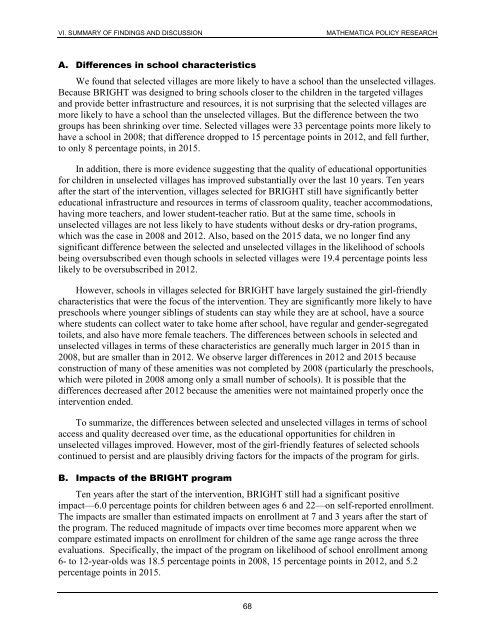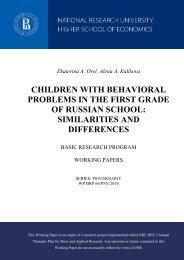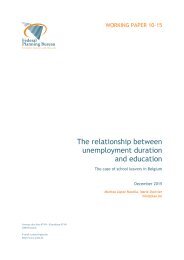Ten-Year Impacts of Burkina Faso’s BRIGHT Program
n?u=RePEc:mpr:mprres:2ecdd42bb503422b802ce20da2bf64b7&r=edu
n?u=RePEc:mpr:mprres:2ecdd42bb503422b802ce20da2bf64b7&r=edu
You also want an ePaper? Increase the reach of your titles
YUMPU automatically turns print PDFs into web optimized ePapers that Google loves.
VI. SUMMARY OF FINDINGS AND DISCUSSION<br />
MATHEMATICA POLICY RESEARCH<br />
A. Differences in school characteristics<br />
We found that selected villages are more likely to have a school than the unselected villages.<br />
Because <strong>BRIGHT</strong> was designed to bring schools closer to the children in the targeted villages<br />
and provide better infrastructure and resources, it is not surprising that the selected villages are<br />
more likely to have a school than the unselected villages. But the difference between the two<br />
groups has been shrinking over time. Selected villages were 33 percentage points more likely to<br />
have a school in 2008; that difference dropped to 15 percentage points in 2012, and fell further,<br />
to only 8 percentage points, in 2015.<br />
In addition, there is more evidence suggesting that the quality <strong>of</strong> educational opportunities<br />
for children in unselected villages has improved substantially over the last 10 years. <strong>Ten</strong> years<br />
after the start <strong>of</strong> the intervention, villages selected for <strong>BRIGHT</strong> still have significantly better<br />
educational infrastructure and resources in terms <strong>of</strong> classroom quality, teacher accommodations,<br />
having more teachers, and lower student-teacher ratio. But at the same time, schools in<br />
unselected villages are not less likely to have students without desks or dry-ration programs,<br />
which was the case in 2008 and 2012. Also, based on the 2015 data, we no longer find any<br />
significant difference between the selected and unselected villages in the likelihood <strong>of</strong> schools<br />
being oversubscribed even though schools in selected villages were 19.4 percentage points less<br />
likely to be oversubscribed in 2012.<br />
However, schools in villages selected for <strong>BRIGHT</strong> have largely sustained the girl-friendly<br />
characteristics that were the focus <strong>of</strong> the intervention. They are significantly more likely to have<br />
preschools where younger siblings <strong>of</strong> students can stay while they are at school, have a source<br />
where students can collect water to take home after school, have regular and gender-segregated<br />
toilets, and also have more female teachers. The differences between schools in selected and<br />
unselected villages in terms <strong>of</strong> these characteristics are generally much larger in 2015 than in<br />
2008, but are smaller than in 2012. We observe larger differences in 2012 and 2015 because<br />
construction <strong>of</strong> many <strong>of</strong> these amenities was not completed by 2008 (particularly the preschools,<br />
which were piloted in 2008 among only a small number <strong>of</strong> schools). It is possible that the<br />
differences decreased after 2012 because the amenities were not maintained properly once the<br />
intervention ended.<br />
To summarize, the differences between selected and unselected villages in terms <strong>of</strong> school<br />
access and quality decreased over time, as the educational opportunities for children in<br />
unselected villages improved. However, most <strong>of</strong> the girl-friendly features <strong>of</strong> selected schools<br />
continued to persist and are plausibly driving factors for the impacts <strong>of</strong> the program for girls.<br />
B. <strong>Impacts</strong> <strong>of</strong> the <strong>BRIGHT</strong> program<br />
<strong>Ten</strong> years after the start <strong>of</strong> the intervention, <strong>BRIGHT</strong> still had a significant positive<br />
impact—6.0 percentage points for children between ages 6 and 22—on self-reported enrollment.<br />
The impacts are smaller than estimated impacts on enrollment at 7 and 3 years after the start <strong>of</strong><br />
the program. The reduced magnitude <strong>of</strong> impacts over time becomes more apparent when we<br />
compare estimated impacts on enrollment for children <strong>of</strong> the same age range across the three<br />
evaluations. Specifically, the impact <strong>of</strong> the program on likelihood <strong>of</strong> school enrollment among<br />
6- to 12-year-olds was 18.5 percentage points in 2008, 15 percentage points in 2012, and 5.2<br />
percentage points in 2015.<br />
68







